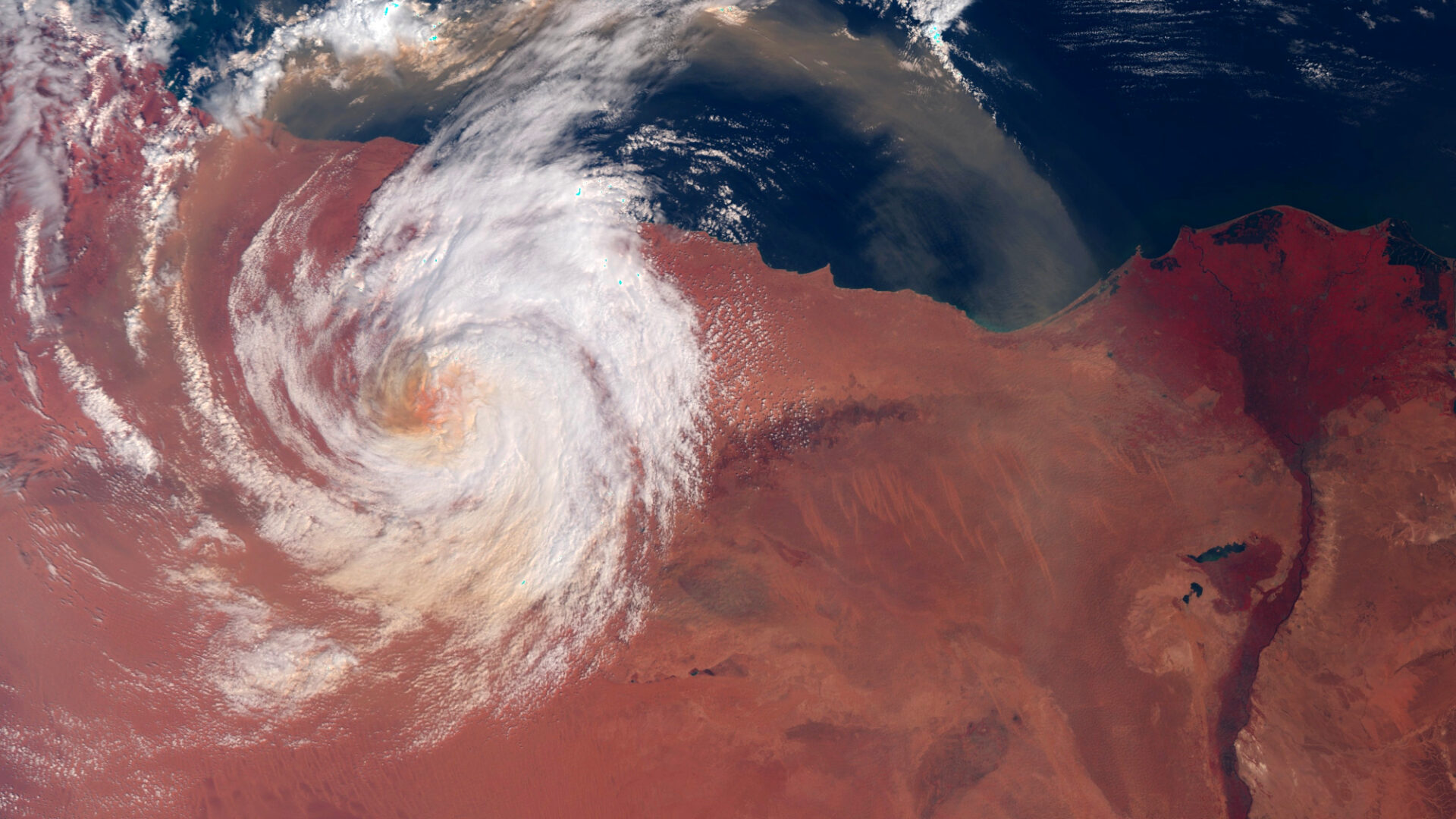

Storm Daniel developed in Greece and was named by the Hellenic National Meteorological Service. It turned out to be the deadliest and costliest Mediterranean tropical-like cyclone recorded in 2023. Around 4 and 5 September, the storm affected Greece, Bulgaria and Turkey and moved toward the coast of Libya, where it caused catastrophic flooding. Due to the storm’s short-lived and sudden nature, preparations for the storm were little to none causing tragic consequences in these Mediterranean countries, particularly Libya.

Between 5-7 September, heavy rainfall and severe weather conditions were reported in Greece, Turkey and Bulgaria, causing floods, landslides and a number of severe weather-related incidents. By 10 September, fifteen fatalities were reported across Volos City and the Pelion mountainous areas in Thessaly Region. Some people were also reported missing in the Agia Triada village in Thermaikos Municipality, Central Macedonia Region. A total of 5,260 people were evacuated across Thessaly, Central Greece, Central Macedonia, Peloponnese and Attica Regions, where the Thessaly was the worst affected region with more than 3,500 evacuated people.
In north-western Türkiye seven people died across Istanbul’s Başakşehir and Küçükçekmece districts and Kirklareli Province. People were also missing in Kirklareli Province due to flash floods, while in Istanbul, more than 1,750 buildings had been affected.
In Bulgaria, four fatalities were confirmed in Tsarevo Municipality, Burgas Province, where several bridges had also been destroyed. More than 130 people were evacuated from the affected areas. Villages on and near the Black Sea coast in Burgas Province of southeastern Bulgaria were inundated, including Kosti and Arapya.

On 10 September, Storm Daniel made landfall in Libya – a country divided and crumbling after more than a decade of conflict, causing severe weather conditions like strong winds, heavy rainfall and floods. Several northeastern areas of Libya were affected including, Benghazi, Tobruk, Toukra, Talmeitha, Almarj, Taknes (Al Jabal Al Akhdar), Al Owailia, Bayada, Albayda, Shahhat, Sousa and Derna.
The worst affected city was Derna (Cyrenaica Region, north-eastern Libya) where mudslides affected thousands of people. Benghazi and most of the cities in the eastern part of the country had ordered curfews and suspended schools. The storm reportedly led to significant infrastructure damage, including road network, disrupted the telecommunications network, and caused the displacement of thousands of individuals and hundreds of casualties. As of 13 September, Libya’s Interior Ministry said that the death toll exceeded 5,300 people killed in the city of Derna alone while over 10,000 remain missing. The death toll is expected to rise further.

The cities of Derna, Shahhat and Bayda were declared as disaster zones by the Libyan Presidential Council based in Tripoli. The heavy rainfall in Derna subjected the dams to immense pressure, leading to their collapse. This devastating event resulted in the destruction of homes, roads, and even bridges. Entire neighbourhoods were swept away by the floodwaters, ultimately ending up in the sea.
Foreign countries, including Turkey, France, Iran and the US have extended offers of aid to Libya in response to the ongoing catastrophic situation. Emergency rescue and relief operations continue in the affected areas, however, with all roads to the most affected areas either cut off or nearly cut off, making it difficult to orchestrate rescue and aid operations.
Experts are underscoring how climate change, combined with political conflicts and economic failure can magnify the scale of disasters. For the past 10 years, there has not been much investment in the country’s infrastructure, making it vulnerable and ill-prepared to handle the effects of climate change and extreme weather events. Many countries including the US, UK, Australia and Canada advise against all travel to Libya due to the unstable safety and security situation. The provision of consular services is also severely limited.
Sitata is monitoring the situation and providing necessary updates through our safety alerts. Download the app to stay informed about any events that may disrupt your travel.